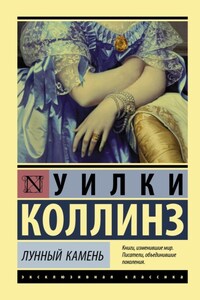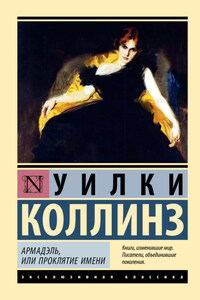I address these lines – written in India – to my relatives in England.
My object is to explain the motive which has induced me to refuse the right hand of friendship to my cousin, John Herncastle. The reserve which I have hitherto maintained in this matter has been misinterpreted by members of my family whose good opinion I cannot consent to forfeit. I request them to suspend their decision until they have read my narrative. And I declare, on my word of honour, that what I am now about to write is, strictly and literally, the truth.
The private difference between my cousin and me took its rise in a great public event in which we were both concerned – the storming of Seringapatam, under General Baird, on the 4th of May, 1799.
In order that the circumstances may be clearly understood, I must revert for a moment to the period before the assault, and to the stories current in our camp of the treasure in jewels and gold stored up in the Palace of Seringapatam.
One of the wildest of these stories related to a Yellow Diamond – a famous gem in the native annals of India.
The earliest known traditions describe the stone as having been set in the forehead of the four-handed Indian god who typifies the Moon. Partly from its peculiar colour, partly from a superstition which represented it as feeling the influence of the deity whom it adorned, and growing and lessening in lustre with the waxing and waning of the moon, it first gained the name by which it continues to be known in India to this day – the name of THE MOONSTONE. A similar superstition was once prevalent, as I have heard, in ancient Greece and Rome; not applying, however (as in India), to a diamond devoted to the service of a god, but to a semi-transparent stone of the inferior order of gems, supposed to be affected by the lunar influences – the moon, in this latter case also, giving the name by which the stone is still known to collectors in our own time.
The adventures of the Yellow Diamond begin with the eleventh century of the Christian era.
At that date, the Mohammedan conqueror, Mahmoud of Ghizni, crossed India; seized on the holy city of Somnauth; and stripped of its treasures the famous temple, which had stood for centuries – the shrine of Hindoo pilgrimage, and the wonder of the Eastern world.
Of all the deities worshipped in the temple, the moon-god alone escaped the rapacity of the conquering Mohammedans. Preserved by three Brahmins, the inviolate deity, bearing the Yellow Diamond in its forehead, was removed by night, and was transported to the second of the sacred cities of India – the city of Benares.
Here, in a new shrine – in a hall inlaid with precious stones, under a roof supported by pillars of gold – the moon-god was set up and worshipped. Here, on the night when the shrine was completed, Vishnu the Preserver appeared to the three Brahmins in a dream.
The deity breathed the breath of his divinity on the Diamond in the forehead of the god. And the Brahmins knelt and hid their faces in their robes. The deity commanded that the Moonstone should be watched, from that time forth, by three priests in turn, night and day, to the end of the generations of men. And the Brahmins heard, and bowed before his will. The deity predicted certain disaster to the presumptuous mortal who laid hands on the sacred gem, and to all of his house and name who received it after him. And the Brahmins caused the prophecy to be written over the gates of the shrine in letters of gold.
One age followed another – and still, generation after generation, the successors of the three Brahmins watched their priceless Moonstone, night and day. One age followed another until the first years of the eighteenth Christian century saw the reign of Aurungzebe, Emperor of the Moguls. At his command havoc and rapine were let loose once more among the temples of the worship of Brahmah. The shrine of the four-handed god was polluted by the slaughter of sacred animals; the images of the deities were broken in pieces; and the Moonstone was seized by an officer of rank in the army of Aurungzebe.
Powerless to recover their lost treasure by open force, the three guardian priests followed and watched it in disguise. The generations succeeded each other; the warrior who had committed the sacrilege perished miserably; the Moonstone passed (carrying its curse with it) from one lawless Mohammedan hand to another; and still, through all chances and changes, the successors of the three guardian priests kept their watch, waiting the day when the will of Vishnu the Preserver should restore to them their sacred gem. Time rolled on from the first to the last years of the eighteenth Christian century. The Diamond fell into the possession of Tippoo, Sultan of Seringapatam, who caused it to be placed as an ornament in the handle of a dagger, and who commanded it to be kept among the choicest treasures of his armoury. Even then – in the palace of the Sultan himself – the three guardian priests still kept their watch in secret. There were three officers of Tippoo’s household, strangers to the rest, who had won their master’s confidence by conforming, or appearing to conform, to the Mussulman faith; and to those three men report pointed as the three priests in disguise.














